Day 6: Sarapiqui
Woke up this morning and found 20 bug bites on my arms, all very itchy. I didn't even know when/where I got the bites, and what bit me. And the itching lasted more than 2 weeks! I haven't been using the bug spray since bugs weren't a problem until now, and I paid the price. Later I started to use bug spray. But it is like using sun screen, you always miss some spots, and the mosquitoes know how to find it.
Had breakfast at 6:30am and checked out of our Arenal hotel by 7am. Our pickup car came right on time. It was GO! Tours' sister company again. Even though it was only a 2-hour transfer from Arenal to Sarapiqui, they still sent a 2-person team, one driver who didn't speak much English, and a tour guide who spoke good English. He tried to explain many things we saw along the way, like wrapping plastic bags around banana flowers to protect them from insects and birds. A gas station in some town we drove past got shut down by the government because they added water to the gas and some tourists filled it and it destroyed their engines ...
One section of the road was really curvy, and there were a lot of trucks driving pretty fast on it including the oil tanker in front of us. He said it is the most dangerous road in Costa Rica because of all the truck traffic. Almost as soon as he said that, the oil tanker in front of us had to stop so hard to avoid hitting the truck in opposite direction that its fuel hose got loose and fell on the road!
We arrived at Sarapiqui Rainforest Lodge around 9am. They had the room ready so we could check in immediately and walked over to Tirimbina Biological Reserve next door for our 10am rainforest hike (included in our tour package). I had never heard of this place until I saw it in GO! Tours' package. I thought it is just a filler attraction located between Arenal and Tortuguero (my next destination). Who knew it turned out to be quite a hidden gem.
1. Sarapiqui Rainforest Lodge main building (front desk and restaurant). The inside of it looked like a giant umbrella. It’s really cool. The style of the building was used by indigenous people of this area more than 1000 years ago.
2. The grounds were very pretty.
3. 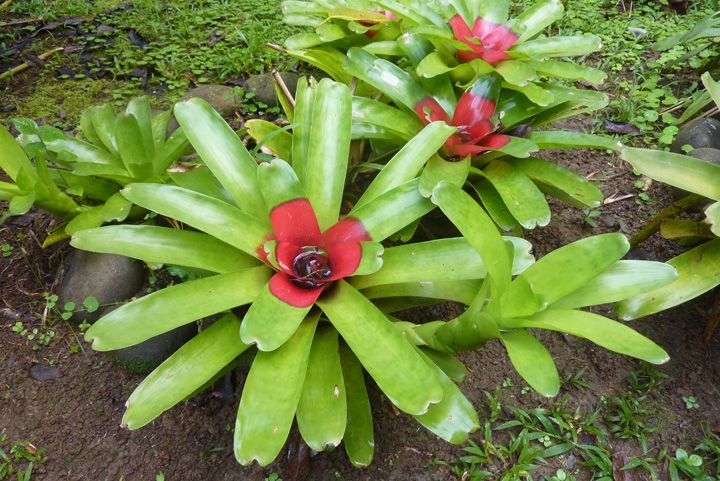
4. 
5. The pool we didn’t get to use.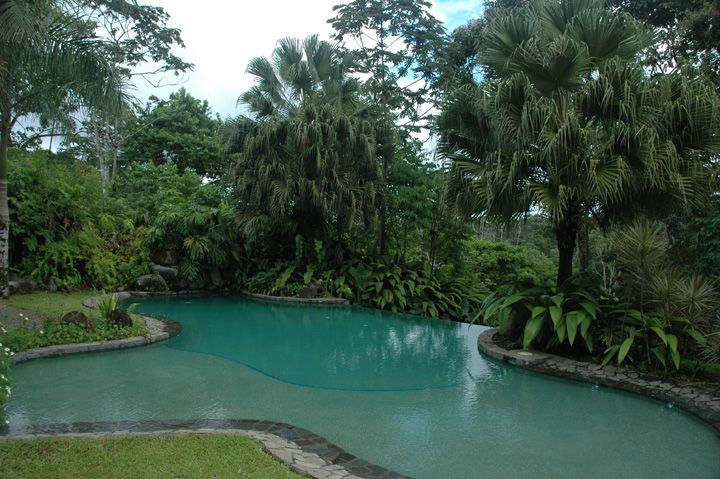
6. The buildings where guests stay.
The buildings may look cool but the room inside was really bare. Our room had no TV, no telephone, no radio, no clock, no remote control for the a/c, and no button on the a/c to turn it on either. After we asked the front desk how to turn on the a/c, they gave us a matchstick to push in the holes to turn the a/c on! Our room did have a king sized bed though. The sheet had been around for a while. It was very thin, and had many stains on it, some of them were blood stains. Gross! I was afraid to look any further. Sometimes it is better not knowing.
Our 10am rainforest hike was a private tour just like yesterday's hanging bridges tour, except we had 2 interns trailing behind us. One boy, one girl, both college kids. (Tirimbina is a non-profit organization created to conserve the rainforest and to provide environmental education and scientific research.)
Our guide, Willy, was amazing. With his naked eyes, he could find things like butterfly with transparent wings, some tiny male lizard sitting on a branch that had a bright orange pouch (Willy said he was trying to attract a female lizard to mate), bullet ants nest, and he used a stick to get some bullet ants out, and they were huge, at least 3/4" long. No wonder their sting can cause severe pain for up to 24 hours. And he could make special bird calls, and the birds would call back ...... Of all the guides we had in Costa Rica, Willy was the most knowledgeable one.
7. Tirimbina has 2 amazing hanging bridges. The first one is 262m, considered to be one of the longest in Costa Rica and has an average height of 22m. This bridge allows you to cross the Sarapiqui River, pass over or visit the island and then reach the other side of the river where the main area of the Reserve is located.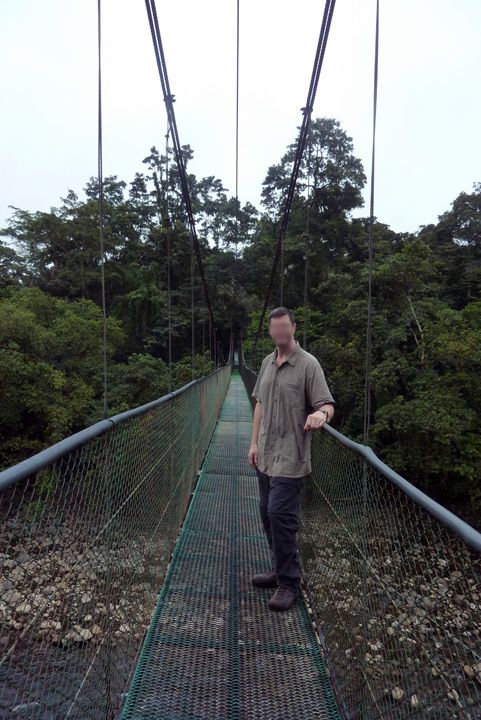
8. Sarapiqui River.
9. Willy showed us an ant nest under a leaf.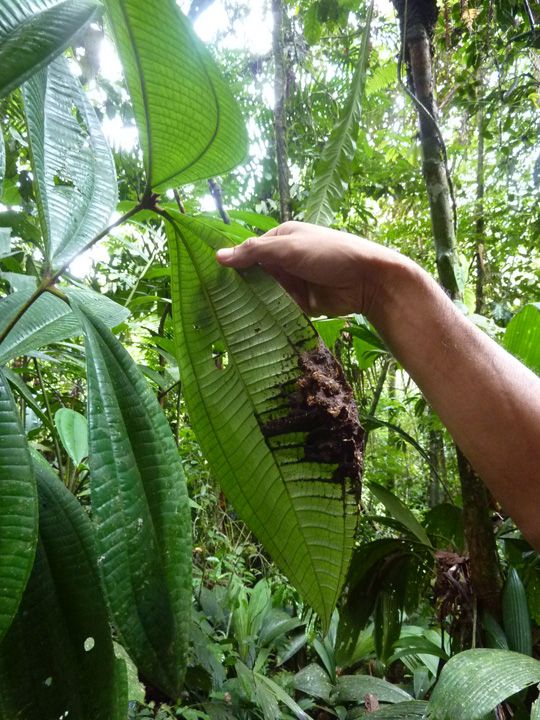
10. Heart shape leaves.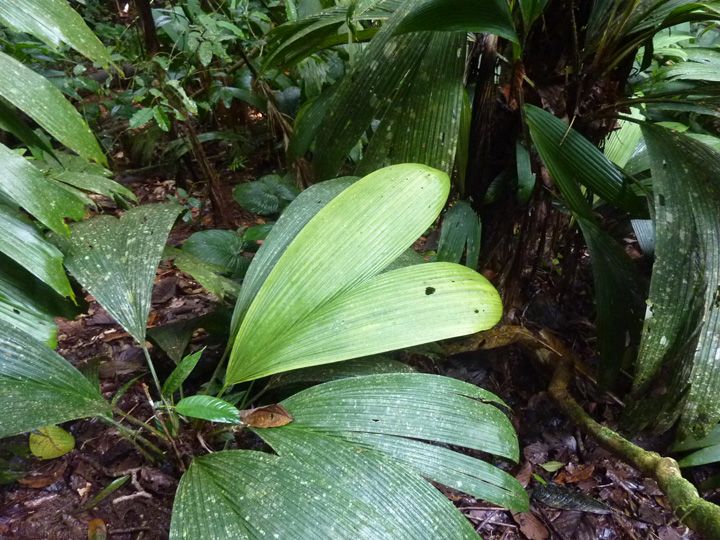
11. Fish tail leaves.
12. Willy heard the frog sing, so he was describing the frog to us, the girl intern who was trailing behind us saw the frog and caught it to show us. 
13. A termite trail.
14. 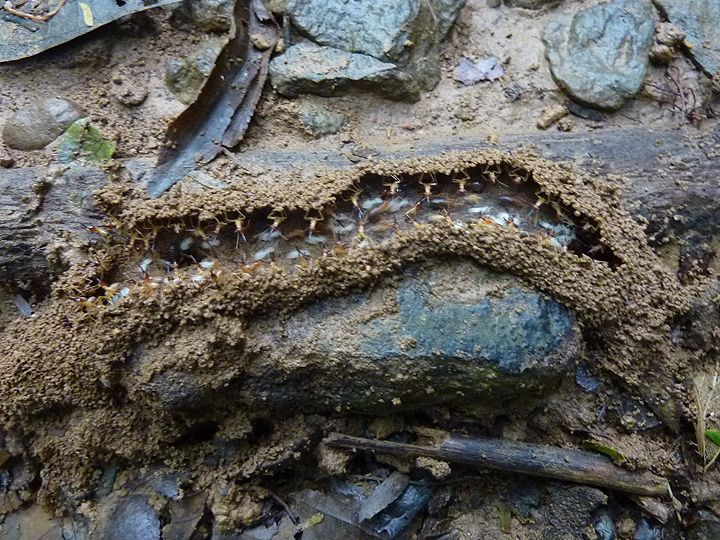
15. Moving palm: by growing new roots in the direction it wants to move, and let old roots die off in the opposite direction, the moving palm can move a couple of inches a year.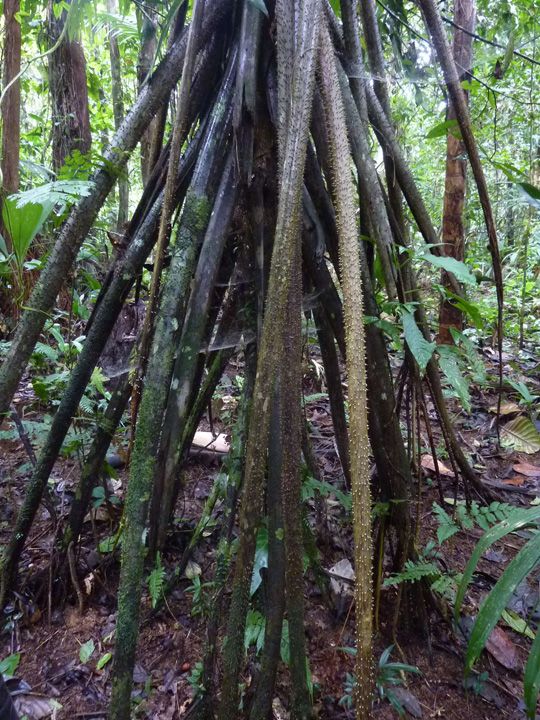
16. Willy told us the proper way of harvesting wicker. BTW, fresh cut wicker smelled great!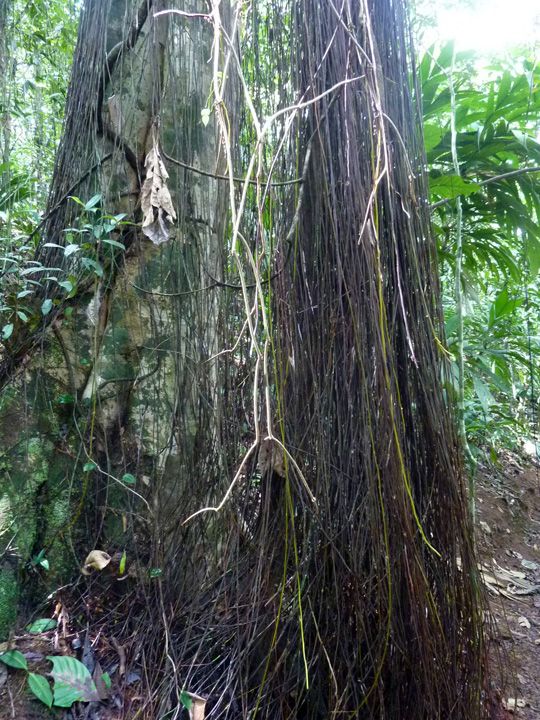
17. Willy said army ants are blind. They follow each other using scents. To demonstrate this, Willy put down a fresh leaf on their trail, the ants were lost for a couple of seconds, but quickly found their old scent back, and got on with their trail.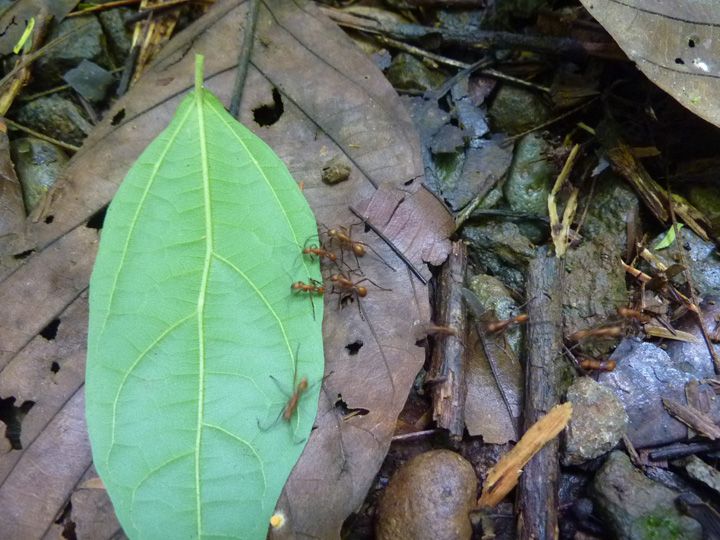
18. These leaves felt so velvety that Willy said the plant's nickname is toilet paper plant.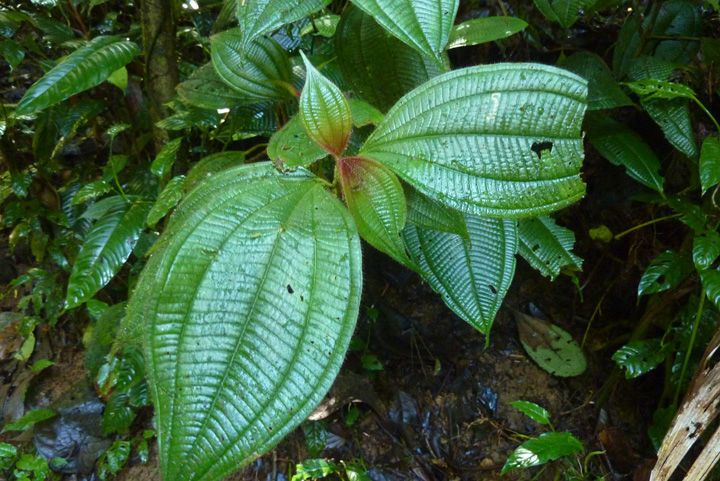
19. The other hanging bridge Tirimbina has is called "Canopy Bridge", since it offers a view from the canopy of the forest. This bridge is 110m long and maximum 35m high. This bridge clearly bounced a lot more than all the other hanging bridges we have walked in Costa Rica.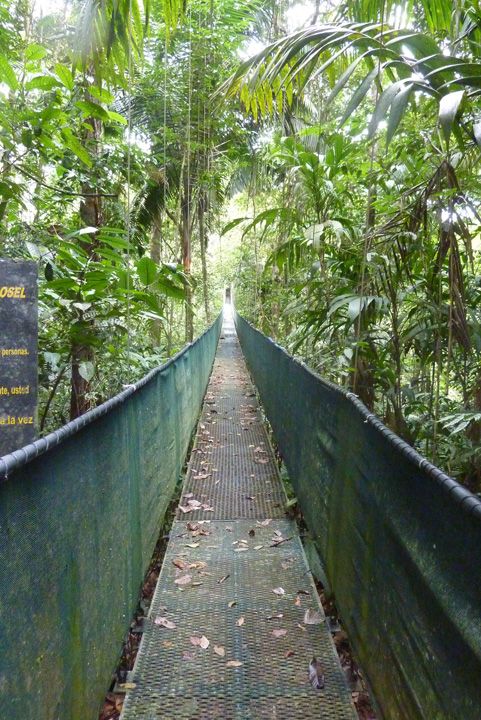
Our rainforest hike ended around 12:45pm. We had a quick buffet lunch at Tirimbina's restaurant ($14/person) before attending the 1:30pm chocolate tour (included in our tour package). It was a group tour of 10 people. Our guide Juan Carlos was also very good. With the help of another Tirimbina staff, they demonstrated how to make hot chocolate from coco fruit, and explained the differences between white chocolate and chocolate etc.
20. Coco fruit.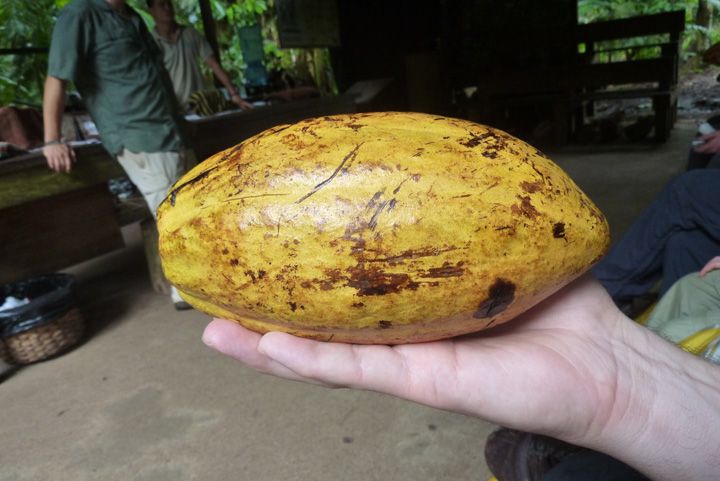
21. Inside. 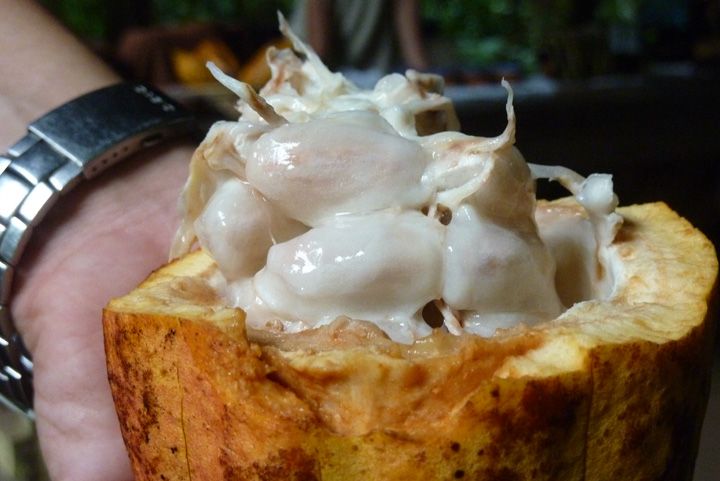
Each of us was given a few seeds, so we could eat the white pulp around the seed (to give it bacteria for the next step - fermentation). Juan Carlos collected the seeds (coco bean) back, let them dry for a few days, so they could be used in a chocolate tour later. For our demo, we used coco bean that had been fermented and dried.
22. After demonstrating grounding roasted coco beans with a stone and mortar, the guide switched to modern equipment.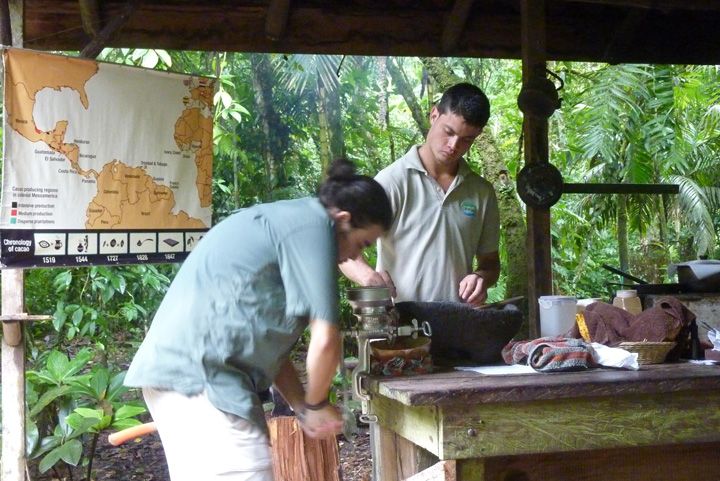
23. Grounded roasted coco bean + brown sugar.
24. Hot chocolate: adding boiling water to the mixture above, plus pouring from cup to cup to make the froth. The indigenous people used to drink it with ground chili pepper.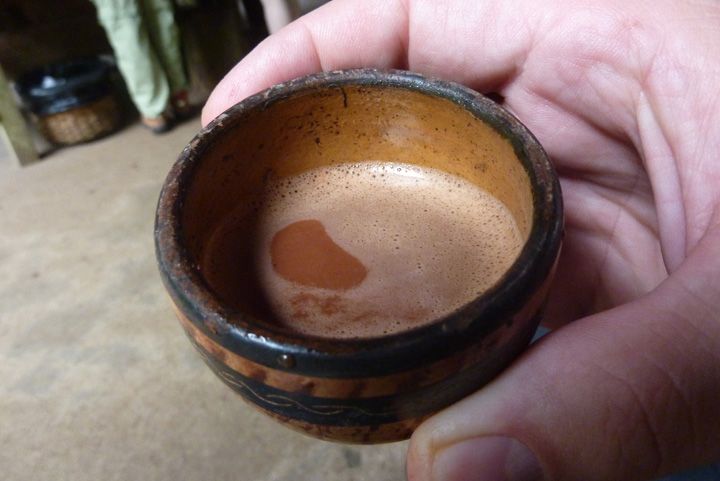
25. The chocolate making process. Since white chocolate is made from coco butter, which doesn't have coco solids, technically it is not really chocolate.
(To be continued)
請閱讀更多我的博客文章>>>